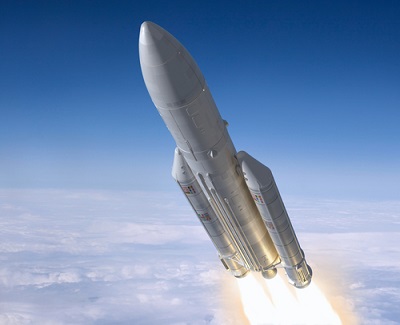Planet Labs, formerly known as Cosmogia, has come out of stealth mode. The space and analytics company plans to launch a constellation of 28 Earth observation satellites and provide "open access" to the imagery. Based in San Francisco, it has raised $13.3 million in venture capital and already has a pair of technology demonstration satellites in orbit.
The company's "Dove" platform is a 3U cubesat able to take images with a resolution between three to five meters, "a scale that allows measurement of a tree canopy, but does not compromise individual privacy," according to the company's press kit. In early 2014, the company plans to launch a fleet of 28 Earth observation satellites. The fleet of satellites will be the largest ever launched and provide rapidly updated high-resolution of the Earth's surface for commercial, environmental, and humanitarian applications.
Unlike other small-sat companies such as Skybox Imaging or Planetary Resources, Planet Labs already has demonstrated its satellite design works in orbit. Dove-1 and Dove-2 were launched in April of this year. Dove-2 was launched as a secondary payload on a Russian Soyuz launch on April 19 while Dove-1 hitched a ride on the Orbital Sciences (News - Alert) Antares rocket test launch on April 21.

Image courtesy Shutterstock
Initial imagery from the Doves can be found at the Planet-labs.com website. According to licensing documents filed with NOAA, Dove-1 was put into an orbit of 250 kilometers at 51.5 degrees -- the same inclination as the International Space Station -- with a lifetime of two weeks. Dove-2, put into an orbit of 290 kilometers by 576 kilometers at an inclination of 64.9 degrees, is still in orbit and expected to have a lifetime of anywhere from six months to two years.
Venture firms with a stake in Planet Labs include Draper Fisher Jurvetson (DFJ), O’Reilly Alpha Tech Ventures (OATV), Capricorn Investment Management, Founders Fund Angel, Data Collective, First Round Capital, and Innovation Endeavors.
"Planet Labs will create an entirely new data set, with both humanitarian and commercial value," said Tim O’Reilly of O’Reilly AlphaTech Ventures. "We've become used to having imagery of the entire Earth. What we haven't yet understood is how transformative it will be when that imagery is regularly and frequently updated."
DFJ also has invested in SpaceX (News - Alert), so there may be a VC networking deal going on behind the scenes to get Doves in orbit as secondary payloads on currently manifested SpaceX launches.
Regardless, the company is no doubt working on another round of VC funding. With demonstrated hardware in orbit and imagery available-- a picture may be worth a thousand words, but how many venture dollars will it raise? Planet Labs shouldn't have trouble getting more money.
Another point worth considering is the rapid assembly of Planet Labs as compared to NASA's technology demonstration cycle. The three founders of Planet Labs all worked at NASA and were involved with small satellites, while two of the three were "co-principal" investigators on NASA's PhoneSat project. Three limited capability PhoneSats were launched on the same April Antares demonstration flight carrying Dove-1 to orbit, so the founders of Planet Labs left NASA, started up a business, got VC money, and built and launched two imaging satellites by the time NASA finally launched its PhoneSats. Seriously, what is wrong with this picture?
Edited by Rory J. Thompson
